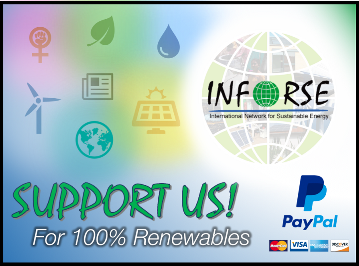|
|
|
|
|
|
|
|
|
|
|
|
|
|
|
|
|
|
|
|
|
| Follow Us: |
| Small Wind Mills in Inner Mongolia - Why so Many? | |
| By Nigel Scott, Gamos ltd, UK. | |
| What Made the Success ? - Unexpected Results | |
|
We conducted a study to identify reasons for this success, in the hope that the knowledge might prove useful for planning technology transfer and dissemination programs in other parts of the world. We summarised our findings in a table of 21 factors which contributed to the success of the Chinese program. Though many simply confirm common understanding, others give new light on the process of technology transfer. Perhaps the most interesting and unexpected of the lessons learned are those regarding cost and the motivation to buy. |
|
| What Motivates People to Buy? | |
|
Participatory exercises showed that people regard lighting as the most important use of electricity, but in the early days this was not sufficient to sell the technology. When the authorities first set up demonstration programmes, they could not even give systems away - herdsmen did not regard the benefits of light and radio as worth paying for. It was the introduction of a broadcasting station in Inner Mongolia in 1980 that created a demand for TVs, and consequently a surge in demand for wind generators. Light alone was not a sufficient motivator - the TV was the critical factor. This demonstrates the importance of identifying demand and of attributing a value to it. |
|
| No Credit System | |
| Another interesting feature is that no credit system was needed. Although borrowing money is common practice amongst herdsmen (people borrow money from banks for fencing etc.) no-one reported borrowing money to buy a wind generator. Instead, herdsmen have capital assets in the form of sheep and goats, which are readily convertible at the local market. | |
| Written Instructions | |
| The most commonly reported source of information at the user level was written instructions. This was despite the fact that most programs have relied on training and extension services for information dissemination. This shows how printed instructions can cover considerable gaps in training. The literacy rate of herdsmen is probably higher than in many potential target groups, but instructions can also take the form of appropriate pictures. | |
| “Top-Down” Approach with Feedback | |
|
It is particularly interesting that the “top-down” approach used, typically characterised by lack of feedback from users to manufacturers, has been particularly successful in this respect. This can be attributed to a number of features: • the diligence of the authorities in accurately gathering data from the field and relaying it to manufacturers; • manufacturers were motivated to take remedial action; • research centres were available to contribute expertise. |
|
| Long Term Political Support | |
| The government was prepared not only to commit resources to a program, but also to commit itself to supporting the program over a long period of time. The lead time from first research to sustainable sales was around 20 years, which is well in excess of the planning horizon for political parties in most democracies. | |
| What does the Future Hold? | |
| The government estimates that even by the year 2020, the number of households too remote for grid connection to be economically viable will be 350,000. Whilst the government is committed to making electricity available to these households, the change in economic conditions within China means that these stand-alone systems are coming to rely more on the private sector. Whilst second-hand wind generator markets are emerging, the government is working on the “next generation” of systems to meet increasing demands for power. | |

| |
| Published in Sustainable Energy News |
|
|
Go back to main page of ISSUE #28 (981KB) 20 pages (2000-02-28) |
|
| Contact | |
| |
INFORSE Secretariat Klosterport 4F, 1. floor DK-8000 Aarhus C Denmark Phone: +45 86 22 70 00 Twitter: INFORSE_org Facebook: INFORSE Web: inforse.org E-mail: ove@inforse.org |
